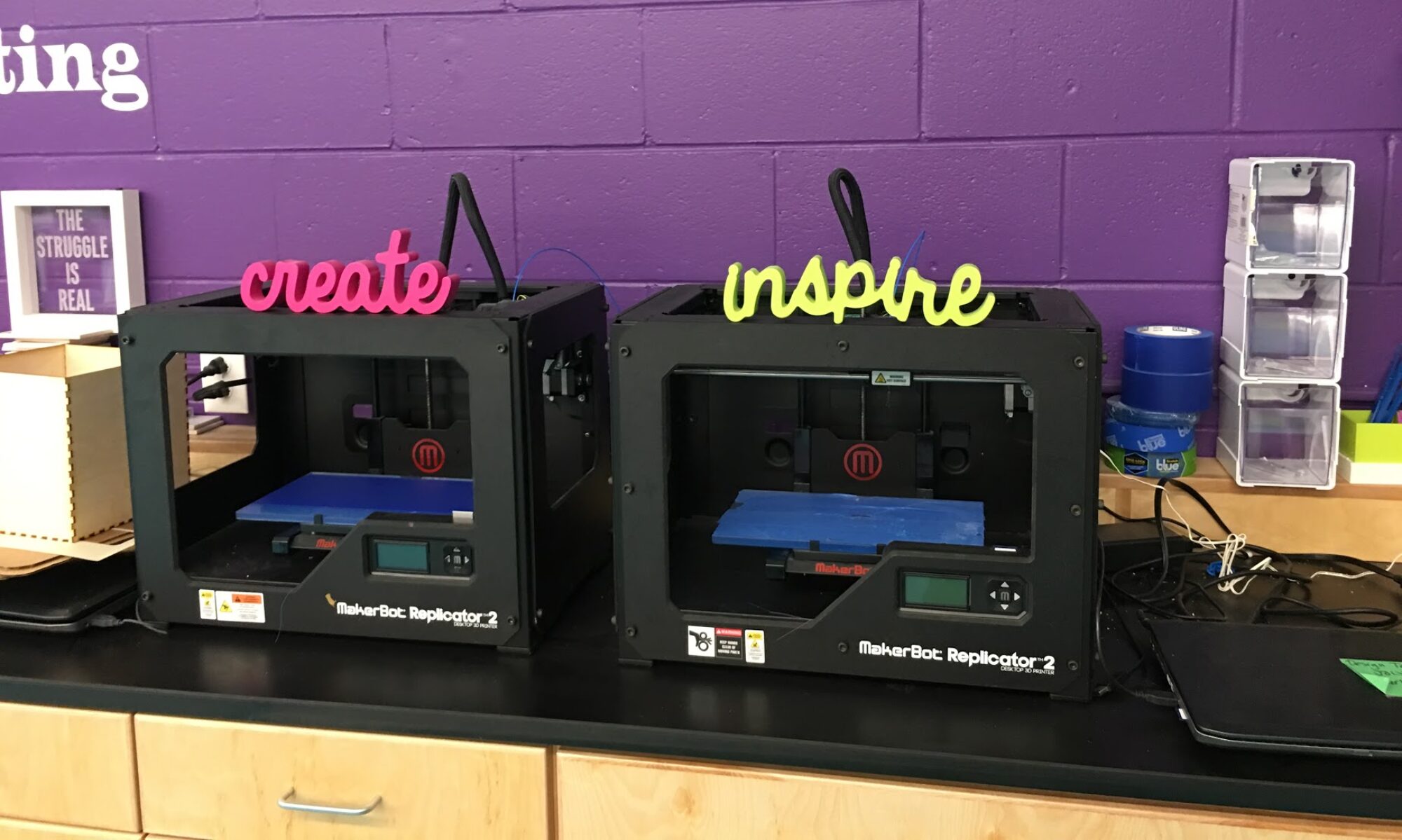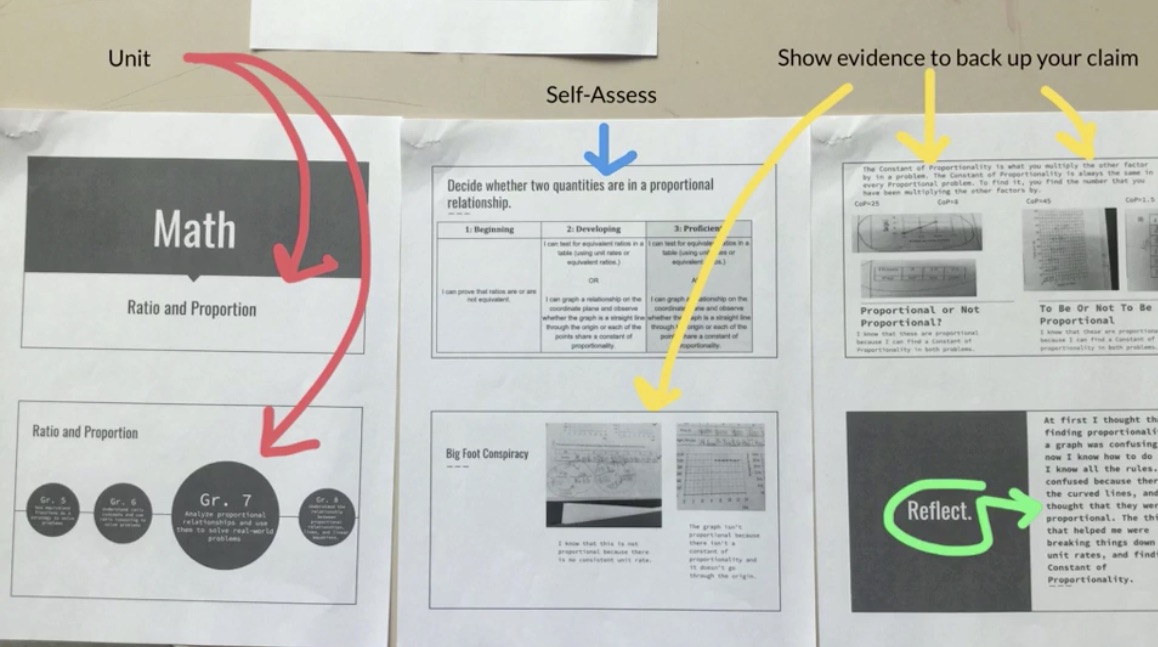…in a middle level math classroom
Deirdre Beaupre, a 7th grade math teacher at Lamoille Union Middle School took a deep dive into proficiency work. And she invited her students to join her along the journey. Deirdre participated in Learning Lab VT last year to explore how best to change her practice in a proficiency-based and personalized learning environment. How to change assessment and grading practices?
Specifically:
“What does personalization look like in the math classroom. I see examples of other content areas being made personal to students and am unsure how to do this in the math classroom. I like the curriculum that I’m using (a lot!). I’m trying to figure out how I can both use this and bring students in as a stakeholder. I want students to work toward mastery of each topic we tackle in my classroom, but I also want them to understand it deeply enough that they could teach it to someone else in a coherent way. What kinds of opportunities will get kids to do this? What kinds of opportunities will get students to go above and beyond when working toward a math proficiency concept?”
Phase one:
Deirdre began the transition into proficiency-based teaching and grading by restructuring how she gave feedback to students and families. A first important step: reeorganizing her grading categories. Activity type categories dropped and learning target categories replaced them. As part of the reconfiguration, Deirdre:
- Focused each assignment on a single learning target;
- Used Target Category Summaries for a view into how each student was performing based on a target;
- Created and shared rubrics that include both learning targets and transferable skills (group work and time management);
- Reported separate, target-specific mini grades for large projects;
- Returned tests without number grades, but with a rubric attached. This provided explicit learning targets and how to demonstrate proficiency in each of the targets.
Shifts matter
“Feedback provides information that helps learners confirm, refine, or restructure various kinds of knowledge, strategies, and beliefs that are related to the learning objectives (Hattie & Timperley, 2007). When feedback provides explicit guidance that helps students adjust their learning … there is a greater impact on achievement, students are more likely to take risks with their learning, and they are more likely to keep trying until they succeed (Brookhart, 2008; Hattie & Timperley, 2007; Shute, 2008).” —Dean, C. B., Hubbell, E. R., Pitler, H., & Stone, B. (2012). Classroom instruction that works: Research-based strategies for increasing student achievement. Alexandria, VA: Association for Supervision and Curriculum Development.
Deidre discovered more students chose to do retakes after getting rubrics back rather than a letter grade than ever before. When students understood they could retake a test, but could would need only tackle the one or two areas of struggle, they were more inclined to accept the challenge. No need to redo the entire test in this proficiency-based environment.
Invite students into the assessment process
To personalize the assessment process, Deirdre expects students to self-assess at the end of each unit where they fall on the rubric. Each student creates a google slide presentation of 3 pieces of evidence they select to ‘prove’ they’ve met the proficiency mark. And these evidence portfolios are shared on their Personal Learning Plans.
Link to Deidre’s Documents:
- Student Ration and Proportion Unit Evidence
- Probability Project: Design Your Own Game
- Expressions & Equations Unit Test (adapted)
- 7th Grade test rubric for Expressions & Equations
- Expressions & Equations: Retake
Phase two: learners as collaborators & a change of course
An important design feature of Learning Lab VT is inviting students into the learning process as collaborators. Deirdre shared her journey with us through her final Learning Lab report.
Let’s hear from Deirdre what it took to pull this off:
“At the beginning of the school year, I was unclear what the focus and purpose of my Learning Lab Student Team would be. I got a group of 4 volunteer students. We had two lunch meetings, once in September and once in October. I brought cookies. We talked about the project I was undertaking and how I was looking for an advisory council to help me make “Going for a Level 4” more engaging and enticing.”
Aiming for proficient:
“Our big idea proficiencies and their corresponding components are posted on the wall at the front of my classroom. They are referred to on a regular basis – introducing a unit, explaining a lesson focus, outlining target skills on an assignment, discussing what will be on an upcoming assessment, etc. Every single one of their grades comes back in rubric form, graded on their proficiency in these objectives. Consistently showing me evidence that they have mastered these objectives independently demonstrates proficiency (Level 3). Being able to explain the concept to another student in a way that makes sense is going above and beyond (Level 4).”
The importance of getting data from my learners:
“I asked my students to list all of the ways that they can show proficiency in math class. Their list consisted primarily of classroom behavior expectations and not content proficiency evidence. A large number of students identified their classroom behavior as how their math content proficiency is measured (37%). This caught me by surprise.
My Learning Lab focus became less about inspiring my students to creatively take math risks and go for a ‘Level 4 – Above and Beyond’, but more about how to better communicate my grading strategy so that they know where a ‘Level 3 – Proficient’ on their report comes from and what it means. I put more energy into being transparent about my grading. I started flagging ‘proficient’ work with stickers so it was clear to students which assignments needed revising and which met the learning goals. And, I was more intentional about referring to our posted learning targets and being up-front about what the focus was for our lessons and assignments.
The takeaway? While I still REALLY WANT students pushing themselves to go for a Level 4, is it more important that I focus on the foundation of ‘How do I earn a Level 3?'”
Enter “Data Wall Tabs”!
“The second change that I put in place was a data wall system as a way for students (and me!) to visualize their proficiency progress. Each students has a tab of paper for each proficiency and its corresponding learning objectives.
Next to each objective are 3 boxes where I can track the number of pieces of proficient evidence that have been submitted. This allows us to see clearly where students are showing success and where students need support.”


